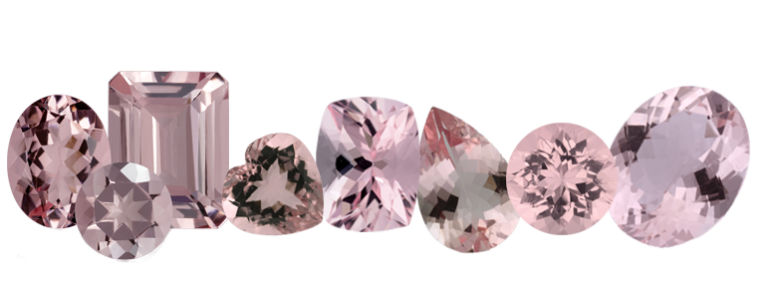
In recent years, morganite has enjoyed a growing popularity. Its pale blush pink or peach hues captivate in vintage-inspired designs and exude feminine sophistication in sleek modern looks and embody understated elegance in classic styles. Whether chosen for an engagement ring or a fashion look, it’s a stunner.
Morganite’s History and Name — Now that’s a tale
It’s easy to find famous emeralds and aquamarines, yet morganite has kept a low profile and the best-known morganite gem, The Rose of Maine (see below), is the only one I came across. Morganite’s history unfolded across the grandeur of the Gilded Age. In this glittering saga, two remarkable historical figures joined forces on a mission involving incredible wealth, vision, and, above all, passion.

A Simple Beginning In Madagascar
In 1910, a pink beryl — cousin of emerald and aquamarine — was discovered on Madagascar off Africa’s coast in the Indian Ocean. It made its way to George F. Kunz, a pre-eminent gemologist of his day and a champion of lesser-known colored stones. Kunz thought of J.P. Morgan’s vast contributions to gemology.
Who Was J.P. Morgan?
This Gilded Age financier established a reputation for helping to create some of the largest and most famous companies in America — companies still running to this day. They included General Electric, U.S. Steel (the first company in the world with $1.4 billion is assets), AT&T, and International Harvester (now Navistar), and the vast networks of rail that made it possible to transport goods across a growing nation. Bottom line: he was a genius at mergers and acquisitions.

As if that weren’t enough
Morgan’s interests reached far beyond business though it was only due to his wealth that he could pursue them on the level that he did. He loved books — particularly, beautiful old books — so he collected them for his personal library. And he gave generously to the arts and sciences. But his all-consuming passion was gemstones, and he meant to collect them with the same determination that drove his success in business
Morganite’s History
Kunz thought of Morgan with regard to naming the new pink beryl. On December 5, 1910, Kunz attended a meeting of New York Academy of Sciences and proposed naming the new stone “Morganite.” His suggestion passed by acclaim, and thus J.P. Morgan’s vast contributions to gemology were enshrined for posterity in the glorious facets of this new pink beryl.
“The Rose of Maine”

Though this remarkable specimen had a strong orange color underground, on contact with sunlight, it turned pink.
In the fall of 1989, one of the largest morganite specimens was discovered in Buckfield, Maine. It measured approximately 12” by 9” and weighed in at a hefty 50lbs. That’s about 115,000 carats. On discovery, it appeared dark orange but on exposure to sunlight it turned pink. Sadly, the two brothers who found it could not agree on its future and one of them split it. Since then, a number faceted beauties have emerged from “The Rose of Maine.” They are hard to find and highly coveted.





Excellent web site. Lots of helpful information here.
I am sending it to several friends ans additionally sharing in delicious.
And obviously, thanks for your effort!